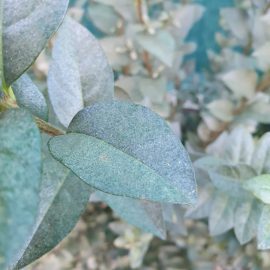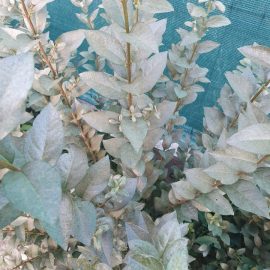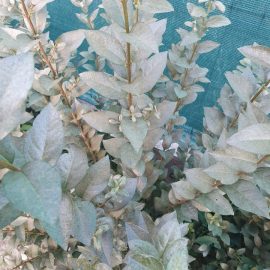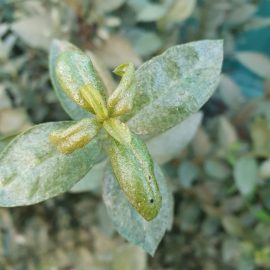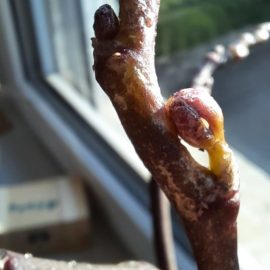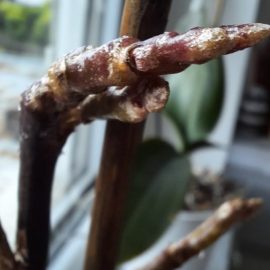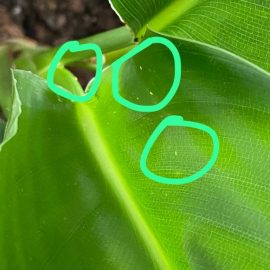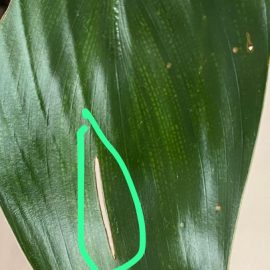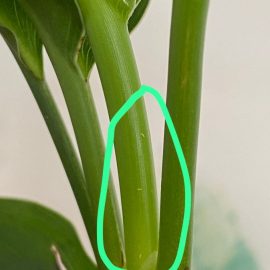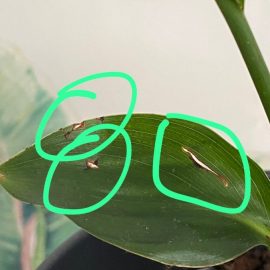The western flower thrips (Frankliniella occidentalis) – pest management

The western flower thrips, Frankliniella occidentalis, is a species native to North America, in the United States. It attacks plants grown in the field such as peach, apricot, plum, grapefruit, cotton, beets, beans, tomatoes, roses, carnations, gerbera, Parma violets, chrysanthemums, etc.
Description. The female has a variably colored body, from light yellow to dark brown, 1.2-1.9 mm long. The male is smaller, 0.9 mm long, colored in light yellow. The larva after hatching is white, turning yellow in the more advanced stages.




Biology and ecology. The western flower thrips overwinters in the adult stage in the soil and as a mature larva in vegetative buds and flower buds. The incubation period lasts 4-13 days, being strongly influenced by temperature variations. After hatching, the larvae cross the epidermis of the tissue, coming to the surface where they feed for 6-19 days.
Attacked plants and damages. In general, the larvae and adult females are phytophagous, feeding by sucking the intracellular juice or the pollen and nectar. On the leaves of the attacked ornamental plants, one can notice the existence of a silver color, due to the deformation of the attacked tissues. The pest causes significant damage to the crops of tomatoes, peppers, cucumbers, or some flower species (carnations, gerbera, chrysanthemums) in the greenhouse. When the attack takes place before flowering, the flower buds no longer open. The attack of thrips is often confused with the attack of mites.
Control: The use of blue traps is recommended.
Recommended products
-
You can find products on a different store
Change Store -
You can find products on a different store
Change Store -
You can find products on a different store
Change Store -
You can find products on a different store
Change Store -
You can find products on a different store
Change Store -
You can find products on a different store
Change Store -
You can find products on a different store
Change Store -
You can find products on a different store
Change Store -
You can find products on a different store
Change Store -
You can find products on a different store
Change Store -
You can find products on a different store
Change Store -
You can find products on a different store
Change Store -
You can find products on a different store
Change Store -
You can find products on a different store
Change Store -
You can find products on a different store
Change Store -
You can find products on a different store
Change Store -
You can find products on a different store
Change Store -
You can find products on a different store
Change Store -
You can find products on a different store
Change Store -
You can find products on a different store
Change Store -
You can find products on a different store
Change Store -
You can find products on a different store
Change Store -
You can find products on a different store
Change Store -
You can find products on a different store
Change Store
In case of strong attacks, it is recommended to apply control chemicals, using insecticides such as:
Recommended products
-
You can find products on a different store
Change Store -
You can find products on a different store
Change Store -
You can find products on a different store
Change Store -
You can find products on a different store
Change Store -
You can find products on a different store
Change Store -
You can find products on a different store
Change Store -
You can find products on a different store
Change Store -
You can find products on a different store
Change Store -
You can find products on a different store
Change Store -
You can find products on a different store
Change Store -
You can find products on a different store
Change Store -
You can find products on a different store
Change Store -
You can find products on a different store
Change Store -
You can find products on a different store
Change Store -
You can find products on a different store
Change Store -
You can find products on a different store
Change Store -
You can find products on a different store
Change Store -
You can find products on a different store
Change Store -
You can find products on a different store
Change Store -
You can find products on a different store
Change Store -
You can find products on a different store
Change Store -
You can find products on a different store
Change Store -
You can find products on a different store
Change Store -
You can find products on a different store
Change Store














































































































































































































































































































































































































































